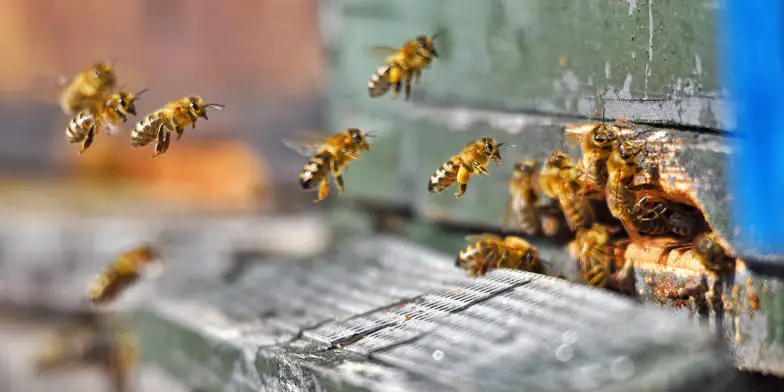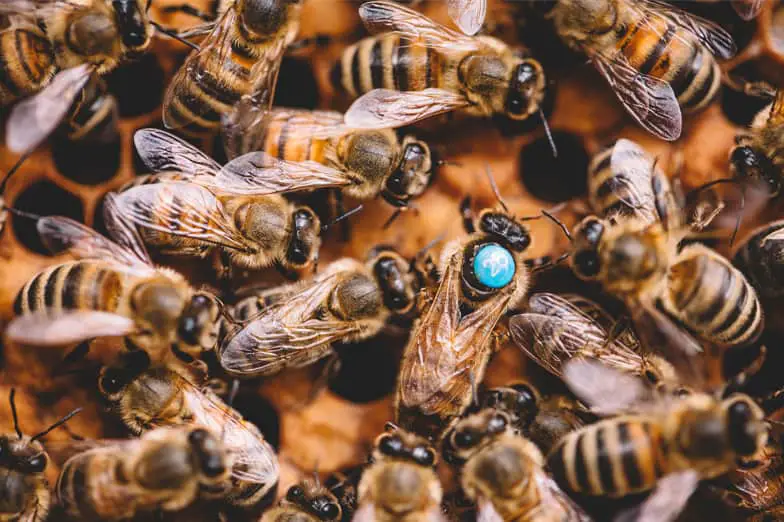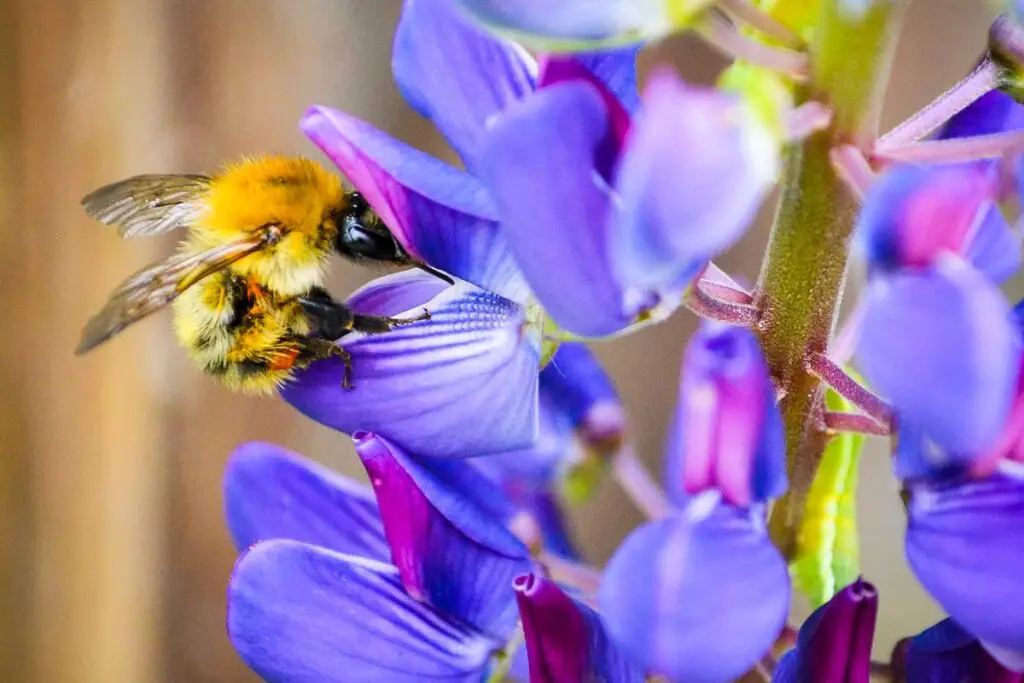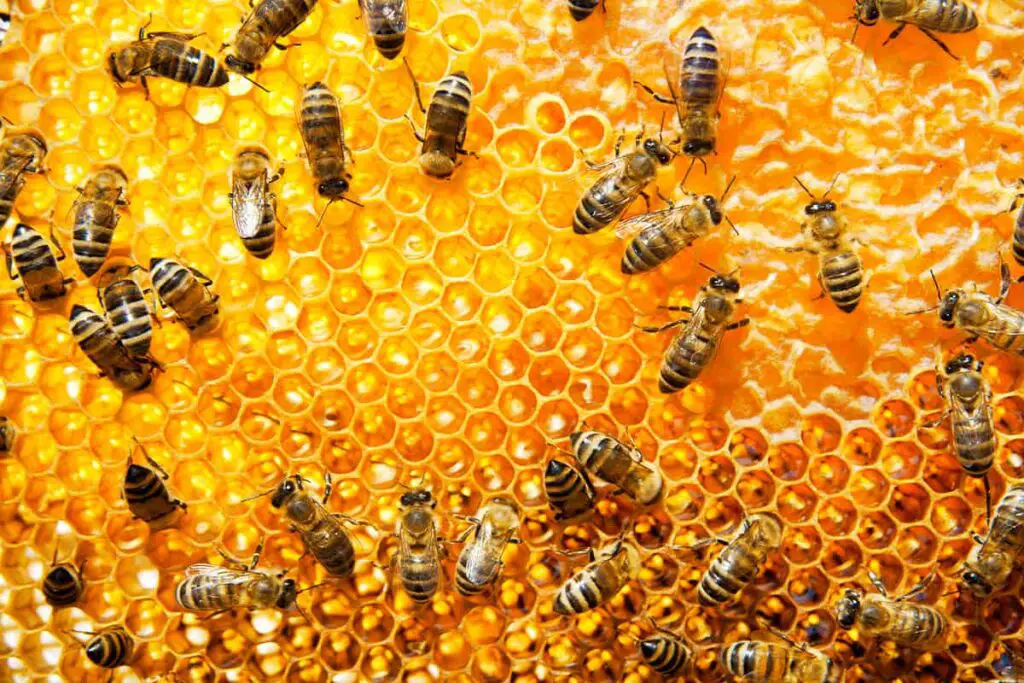
Ask any beekeeper and they’ll tell you that there is definitely at least one female bee in the hive, and she plays the role of queen. But what about the others? It may surprise you to learn that the queen is far from being the only female in a hive, which will commonly have a population of between 10,000 and 80,000 bees.
The queen bee is the only female that can reproduce in a beehive, but she is not the only female in the hive. There are also worker bees, all of whom are female. Each bee plays a different role in sustaining its queen and the longevity of its hive.
The female worker bees labor alongside the male drone bees to orchestrate conditions that will sustain their population and protect their queen. Each worker and drone bee is the offspring of the queen bee.
Lets explore these roles in more depth.
What Do Queen Bees Do?
The queen bee is regarded as the most important bee in the hive because she maintains bee population. Her primary duty is to lay many, many eggs. On average she will lay 1500 eggs each day to maintain a large colony.
The queen bee’s second and equally important role is to produce pheromones which regulate the unity of the colony and signal the changes and adjustments that need to occur to protect the hive.
How Many Queens Can There Be in a Hive at One Time?
A beehive can only have one queen at a time, and there are a couple of exceptional circumstances that prove this is the case.
A Second Queen Bee Shows Up
Occasionally, an intruder queen bee will appear in the Hive trying to claim the hive as her own. When this happens, worker bees will force the intruder queen bee out of the hive, or failing that, the current queen of the hive must fight the intruder queen bee to death. Whichever queen lives will remain, and become the matriarch of the hive.
Dealing with Hive Overpopulation
At times, a beehive can become crowded and overpopulated. Bees, being the intelligent creatures they are, recognize this problem and start to create wax cells for a new queen to inhabit. The new queen is allowed to keep the old hive and half of the worker bees while the old queen takes the other half and sets out in search of a new home, resulting in a swarm.
How is the Next Queen Bee Chosen?
Holding the most important role in the hive, queen bees are highly coveted and protected. However, eventually even her life must come to an end. She might have become injured, she may be rejected from the hive, or her ability to lay eggs may have started to slow down; All of these factors signal to the rest of the colony that it is time to choose a new queen.

When the time comes to choose a new queen, the current queen will usually lay another array of eggs. From this batch, worker bees will select about 20 of these fertilized eggs to be potential queens for their hive. Once hatched, these specific few bees are fed royal jelly which allows them to grow bigger, and with a notably larger abdomen than the worker and drone bees.
These baby bees are then left to feed on royal jelly in their individual cells, made of wax by the worker bees, and whichever bee reaches maturity first and emerges is crowned the new queen. In the case of two new queens emerging at the same time, they will fight until one is left standing to be crowned queen. The new queen must destroy the other competitor larvae shortly after she emerges as the queen to avoid future conflict within the hive.
Once a new queen has emerged, the hive deals with the old queen in one of a few ways. They may kick the old queen out of the hive altogether. If she is quite old, they might let her stay until she dies naturally. In other cases, the old queen gathers half of the worker bees and leaves the hive to search for a new place to build a hive.
What Do Worker Bees Do?
Worker bees are all female, and all daughters of their queen. Similar to a human’s various roles throughout their lifetime, worker bees experience a similar pattern. When a worker bee is young, they will usually remain within the hive to care for the queen, fanning her, and nursing the new larvae. Young worker bees typically produce wax from their abdominal glands, which is the substance used to make the honeycomb structures within the nest.
Once she has become more physically developed and reaches the mid-stages of her life, a worker bee will move on to tasks interacting with the outside of the hive such as transferring nectar, making more wax, and guarding the entrances of the hive.
In the latter portion of her life, a worker bee will usually take flight, leaving the hive to forage for water, pollen, and nectar to bring back to the hive. The foraging phase for a worker bee usually marks the impending end of her life as it can be a dangerous task.
While foraging, a worker bee can fall victim to predators, insecticides, diseases, losing her way home, or being blown off course in a wind storm. Worker bees do not lay eggs because the pheromones of the queen suppress their ability to do so.
It could be argued that worker bees are the most productive members of a colony, especially in comparison to their male equivalent, the drone bee.
What Do Drone Bees Do?
Drone bees can be described as living a leisurely life with the sole purpose of finding a young queen to mate with. Unlike the female bee, Drone bees do not have stingers. The male bees are cared for by the female worker bees who feed them nectar so they have the energy to leave the hive each day to search for a queen mate.
Each day, a drone bee will leave his hive and proceed to a hangout of sorts where drone bees from other colonies will gather. A virgin queen bee will then fly to this area where she will mate (in flight!) with several drone bees.
The male drone will mount the queen, inserting his endophallus, and ejaculating semen. As the male bee pulls away, his endophallus is ripped away from his body staying inside of the queen. Shortly after this, the drone bee will die because the exchange leaves a wound in his abdomen. He’s achieved his purpose in life.
The queen bee will then move on to the next drone bee who will remove the endophallus of the previous bee and continue this mating cycle. Occasionally, drone bees will return to their hive after mating, but they’ll be kicked out by the worker bees as they no longer serve a useful function.
The Role of the Queen Bee After Mating
After one mating flight, a queen bee will store up to 100 million sperm within her oviducts. This will fertilize the eggs she will lay throughout the entirety of her life. Queen bees know and can control the sex of their offspring by deciding whether an egg should be fertilized or not as it passes through her oviduct.
If the egg remains unfertilized, it will become a male drone bee, and if the egg is fertilized, it will become a female worker bee. The queen bee manages the impressive and precise calculation of everything that takes place within her hive.
Final Thoughts
While the queen bee is not the only female present in a beehive, she is the conductor of what her colony does. Working synchronously with her worker and drone bees, she is able to both ensure the longevity and health of her colony, and produce future hives.
Sources
Driven by a passion for those tiny creatures that rule our world, we at Bug Domain strive to be your go-to resource for information on insects.



